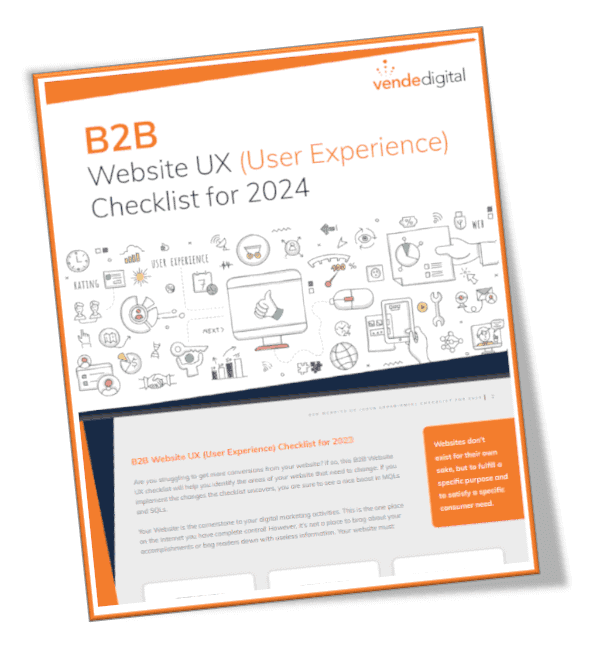Say what you mean. You might have wished for more website traffic, but unless that higher traffic resulted in more sales and conversions you didn’t really get what you wanted. More than higher traffic what you really wanted was higher conversions. While an increase in traffic logically equals a proportional increase in conversions, that isn’t always the case. And if you have significantly increased your traffic without also increasing your conversions and sales, your website might have a problem. Here are 3 reasons why website traffic is up but conversions are down.
Attracting Unqualified Web Traffic
Acquiring the wrong website traffic is the single biggest, and perhaps the most common, reason your high traffic website isn’t converting. How do you know you are attracting the wrong kind of traffic? If you are generating significant traffic to your blog and website, if email subscriptions are skyrocketing, if everything is growing other than sales, you are attracting the wrong kind of traffic.
The first step is to do some testing and see where your traffic is coming from. If you are trying to target business owners but are instead attracting college students, you aren’t going to get the conversions you are looking for. The only way for traffic to turn into conversions is for it to be the right type of traffic. Unqualified traffic could be because of poor audience targeting on a campaign or keywords that are attracting the wrong kind of traffic.
When you determine where the traffic problem resides you have a few options. The first is to acquire different traffic. To do this you will need to invest in finding new keywords and adjusting targeting on your campaigns. Depending on your business you might have the option to change your product or service to match your traffic. Though this isn’t an option for all businesses it is one to consider because demand is always harder to generate than supply.
Offering the Wrong Incentive
While acquiring the wrong traffic is the biggest reason a website isn’t converting, it certainly isn’t the only reason. You might have a steady stream of purchase-primed, solution-needing visitors streaming through your site on the daily. That would mean that your problem isn’t acquiring unqualified traffic, your problem is your incentive isn’t strong enough for the audience that is coming through to the site.
Small businesses are least likely to have an offer that is truly compelling. If you visit a website that says “5 percent discount off your next service if you subscribe to the website today,” you will probably pass on that offer. While 5 percent off a service that you want or need is nice, it isn’t a strong offer. A stronger incentive would be, “Sign up today and get a free website analysis, valued at $100 – Offer expires once you leave this page.” Here you have combined a stronger offer with a call-to-action for prospective clients.
What are you actually selling and what do your customers actually want? If you can’t answer those two questions, you can’t create a compelling offer. You need to identify why your product or service is too good for customers to pass up and then tell them about it in no uncertain terms. A strong incentive will not only attract more conversions, it will help your business to make more money over the long term.
Creating Too Much Noise
The easier it is to click “Buy,” the more often it will happen. If your homepage is crowded, messy, confusing, or worst of all malfunctioning, your visitor will leave in seconds without hesitation. Every hurdle your potential customers have to jump through will cause more of them to jump ship.
Website load time is a major hurdle for many customers. In fact, 40 percent will abandon your website after just 3 seconds. Poor navigation will hurt your conversions. If it’s not immediately obvious to users where they are supposed to go, they aren’t going to take the time to figure it out. If customers are never checking out on your website your shopping card could be broken. Don’t let customers put items in their basket only to find out they can’t check out. Your check out process should work on both desktop and mobile.
Take a look at your website through the eye of your target user. Click on your homepage and count how many clicks it takes to finish a transaction. While you’re at it time yourself to see how long the transaction takes.
Make your home or landing page simple, clean, and welcoming. Make your copy easy to scan. Add a headline, subheadings, and bullet points to make it easier for visitors to digest the information. Keep your copy and graphics short, only including the necessary elements to get your message across and to point visitors in the direction you want them to go next. Above all, provide a good user experience. Make sure their journey on your site towards the goal you want them to complete is as smooth as possible.
While the general rule is that more traffic equals more conversions it isn’t always that simple. Acquiring the wrong traffic, offering the wrong incentive, and creating too much noise are all reasons why website traffic is up but conversions are down. If you aren’t seeing the same bump in conversion as you are with your traffic make sure to fix these 3 common problems.
Sign up for a free website analysis

